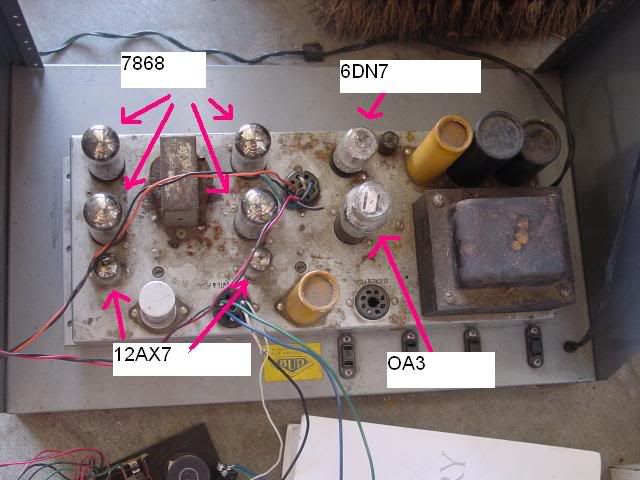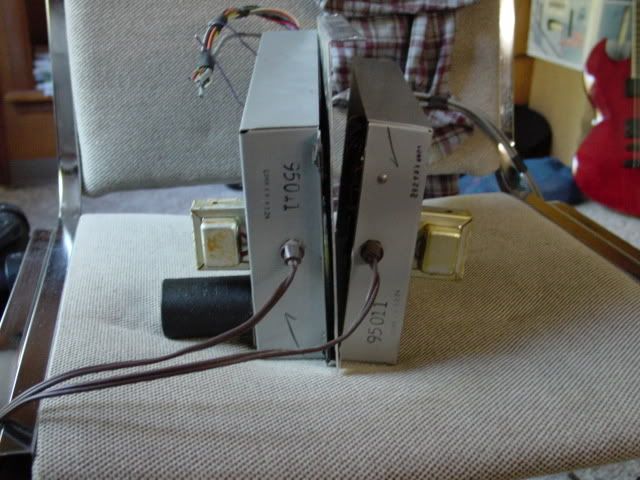I pulled this old tube amp 
out of a broken conn organ (rats had chewed a lot of cables and other unknown faults) and I have connected a jack to it so I can play it with a guitar or piano, etc. It sounds great right now, got it sounding out of the small leslie that came with it and 2 12" drivers that were in the organ as well, but I have no tone, volume controls or a standby switch.

I've heard you place the standby switch between the plates and transformer, and tone between stages of gain. If this is true, where are the plates and the gain stages in this amp?

The pots you see in this above photo control the left and right channels of the speakers. They are cranked right now but it is not very loud. I wish to get this thing breaking up if I can.

I have a volume pedal as well and may end up using it solely for this amp, but f I wanted to wire controls in it, where would they go?
I plan on making a boost pedal that I would install on board or keep it on the floor, any suggestions about either idea?
Thanks for any help you'all could'n give'n me.

out of a broken conn organ (rats had chewed a lot of cables and other unknown faults) and I have connected a jack to it so I can play it with a guitar or piano, etc. It sounds great right now, got it sounding out of the small leslie that came with it and 2 12" drivers that were in the organ as well, but I have no tone, volume controls or a standby switch.

I've heard you place the standby switch between the plates and transformer, and tone between stages of gain. If this is true, where are the plates and the gain stages in this amp?

The pots you see in this above photo control the left and right channels of the speakers. They are cranked right now but it is not very loud. I wish to get this thing breaking up if I can.

I have a volume pedal as well and may end up using it solely for this amp, but f I wanted to wire controls in it, where would they go?
I plan on making a boost pedal that I would install on board or keep it on the floor, any suggestions about either idea?
Thanks for any help you'all could'n give'n me.







Comment